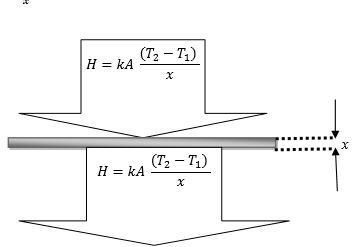|
S.No |
Physical quantity |
Independent / Dependent |
Measured with |
Measuring instrument’s |
||
|
Minimum |
Maximum |
Least count |
||||
|
1 |
Temperature |
|
|
|
|
|
|
2 |
Time |
|
|
|
|
|
|
3 |
Mass |
|
|
|
|
|
|
4 |
Voltage |
|
|
|
|
|
|
5 |
Current |
|
|
|
|
|
- Measure the mass of the lower metal disc before and after the experiment, and the diameter of the sample poor conductor at different places (at least 6 measurements) using Vernier calipers.
- Take proper precaution not to burn your hands.
- Assemble the Lee’s disc apparatus and measure the thickness of the sample in situ using a microscope or a Vernier calipers or a screw gauge (at least 6 measurements).
- Pass steam through the steam chamber.
- When the steady state is reached (temperatures \(\theta_1\) and \(\theta_2\) change by less than 0.5\(^\circ\) Celsius in 1 minute) and make a note of \(\theta_1\) and \(\theta_2\).
- To find the rate of heat loss from B, take away the sample D (Hold the steam chamber (C) using gloves and carefully remove the poor conductor disk using gloves) and heat B directly from C until its temperature has risen by about 10\(^\circ\)C.
- Then remove C using gloves and cover the top part of B again with the sample D.
- At intervals of a minute, measure the temperature of B and plot it as a function of time. Ensure that there are minimum 5 points above and below the \(\theta_1\).


|
|
Time (s) |
Temperature (℃) |
|
1 |
|
|
|
2 … |
|
|
|
10 … |
|
|
|
… till required temperature |
|
|